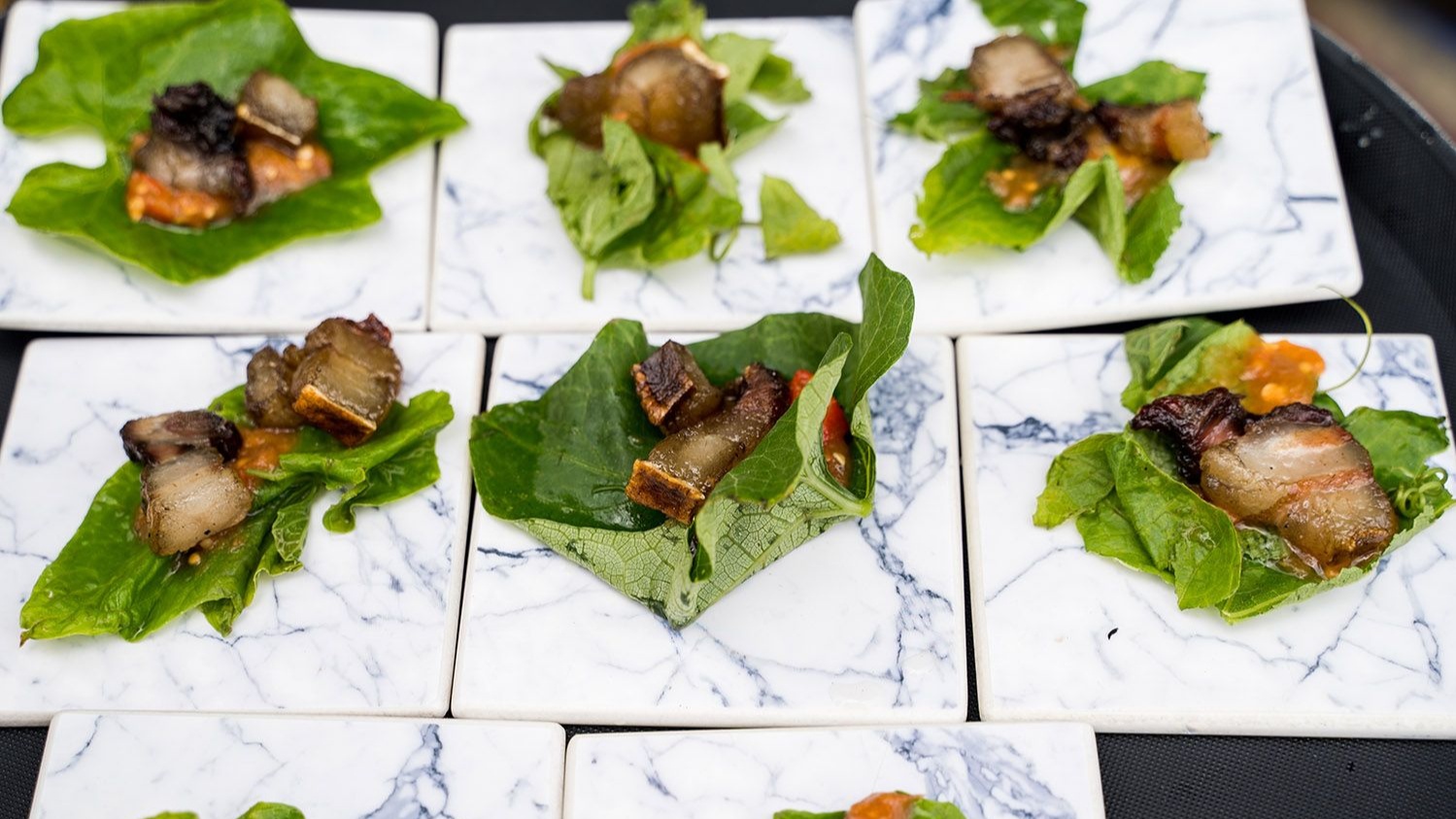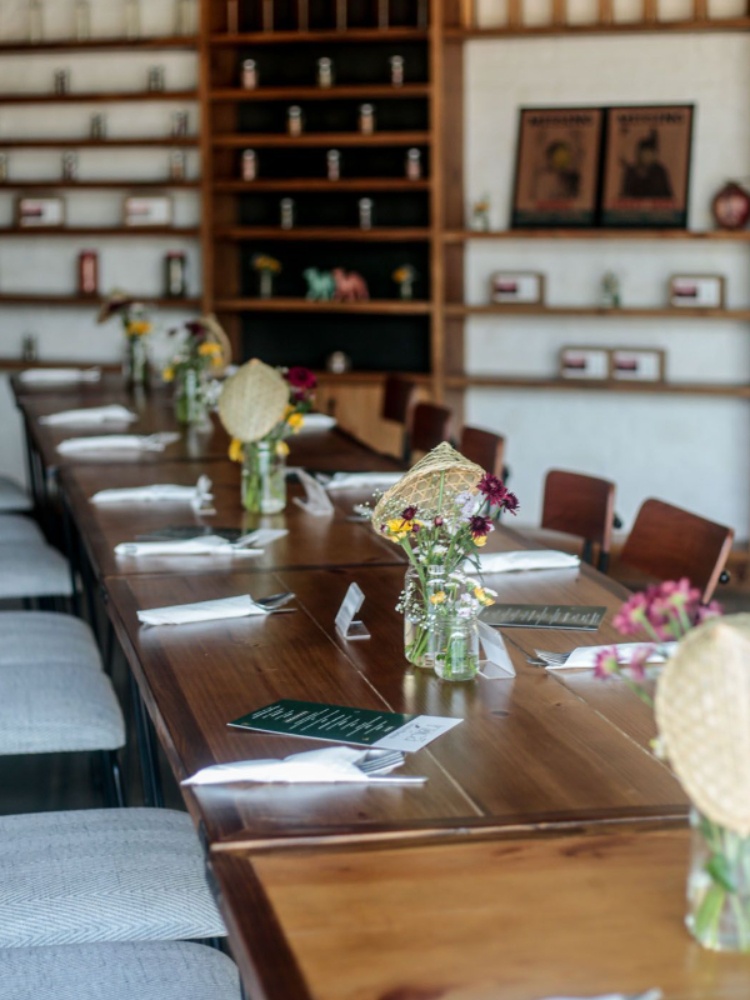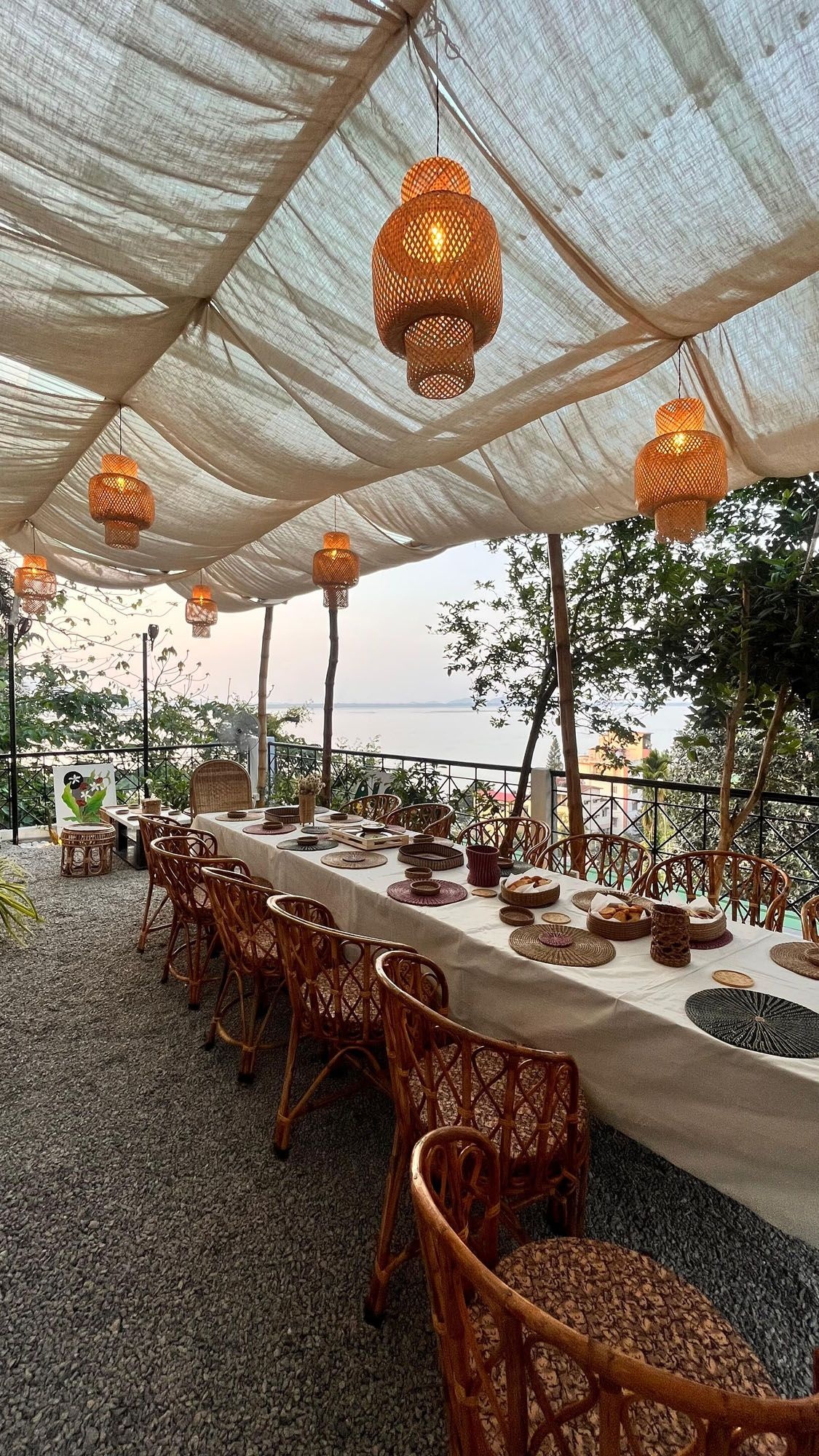When Tanisha Phanbuh was growing up in Shillong, one of her favourite after-school snacks was tungrymbai on toast. Years later, the memory of that mushy fermented soybean, often dismissed for its strong aroma, was still so fresh in her memory when she recreated it for a pop-up in Delhi, where she’s now based.
This was back in 2017, at the now-shuttered Ek Bar, when Indian fine dining had little or nothing to do with Khasi food—or any of the Northeast Indian cuisines, really. So Phanbuh’s culinary takeover came as a surprise to the capital’s diners, introducing them to flavours they had so far overlooked. But today, things are a little different.
Last month, at Delhi's popular restaurant Fig & Maple, the self-taught chef reimagined Meghalaya’s classic pork brain salad, locally known as doh khlieh, in the form of crostinis. Her aim was simple: to spotlight the flavours and ingredients integral to her home state with a creative twist. Through her platform, Tribal Gourmet, she spotlights the food of her state via pop-ups, collaborations, and other events in the capital. And most of her interpretations are offshoots of beloved dishes from her childhood. These, she adds, “inspire me to create modern spins, and at the same time help familiarise diners with my beloved cuisine”.

Tanisha Phanbuh's dishes are often inspired by memories of her favourite childhood foods
Revamping tradition is not easy, and it’s even harder when it comes to the centuries-old cuisines of Northeast India. On the rare occasions that food from the region does make it to flashy modern Indian dining experiences, it is usually limited to blink-and-you-miss-it bhut jolokia experiments. But now, chefs and tastemakers from the region are challenging stereotypes and showcasing their heritage with a good dose of imagination. And in this mission, the space is as important as the food.
Phanbuh, for example, makes it a point to create a sense of place at her events with craft installations and tablescapes that include elements such as miniature knups—the traditional bamboo umbrellas or sunshades worn by the farming communities back home. For one of her pop-ups, she placed a mannequin-like installation in traditional Khasi attire near the entrance of the venue. Folk stories about spirits and nymphs were printed out for diners, providing ample fodder for conversations between courses.
In May, she hosted a ‘modern Meghalayan’ pop-up at Indica, an experimental space in Gurugram that hosts pop-ups, culinary workshops, and private dining events. About 30-odd diners came together for a seven-course tasting menu, surrounded by wooden shelves stacked with spice and herb jars, books, and food-themed artworks. The highlights were dawki (cured fish served on a bed of tree tomato sauce), meant to evoke the small town in the Jaintia Hills known for its crystal-clear Dawki river; a risotto-like ja bowl inspired by the modest rice and tea stalls selling jadoh (rice cooked in pork blood); and smoked pork and bamboo shoot dumplings encased in shiso (perilla) leaves. She also slipped in a palate cleanser of tart soh shang berries for a Michelin-esque feel.








